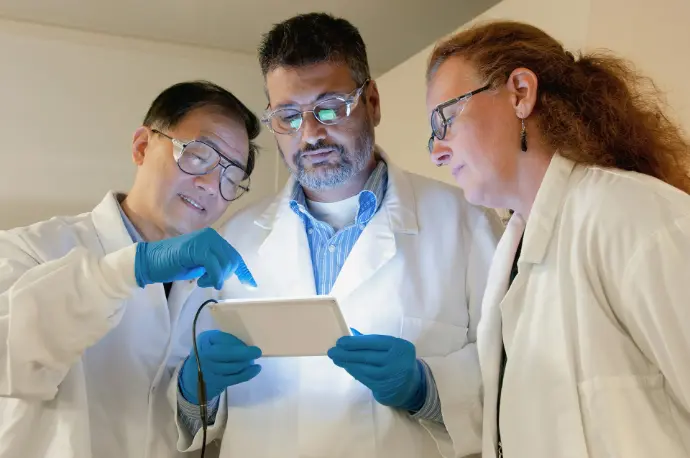Real-World Case Studies: How Diagnostic Instruments Are Transforming Cancer Diagnosis
Here are real-world-inspired case studies showing how specific diagnostic instruments significantly improved the accuracy, speed, and outcomes of cancer detection.

🧬 Case Study 1: Early Detection of ALK-Positive Lung Cancer Using NGS Panel
Problem:
A 47-year-old non-smoker presents with persistent cough and weight loss. Imaging reveals a suspicious lesion in the lung, but traditional biopsy fails to identify a targetable mutation.
Instrument Used:
Next-Generation Sequencing (NGS) Panel
Outcome:
NGS detected an ALK gene rearrangement, which was missed by standard PCR. The patient was matched with targeted ALK inhibitor therapy, resulting in tumor shrinkage and extended progression-free survival.
Takeaway:
🔍 NGS enabled personalized therapy selection by detecting actionable mutations that standard techniques missed.
🧪 Case Study 2: Clarifying PSA Recurrence with ProstaScint Imaging
Problem:
A 62-year-old male undergoes radical prostatectomy. Two years later, his PSA level begins to rise, but bone scan and CT imaging show no visible metastases.
Instrument Used:
ProstaScint (Indium-111 Capromab Pendetide) Imaging
Outcome:
ProstaScint imaging revealed occult lymph node metastasis, leading to targeted radiotherapy to the pelvic region. Follow-up PSA dropped significantly.
Takeaway:
📡 ProstaScint filled the diagnostic gap in a PSA recurrence case with inconclusive conventional imaging.


🔬 Case Study 3: Diagnosing Acute Lymphoblastic Leukemia with Flow Cytometry
Problem:
A 10-year-old child presents with fatigue, fever, and enlarged lymph nodes. Blood smear shows abnormal white cells, but diagnosis remains uncertain.
Instrument Used:
Multiparameter Flow Cytometer
Outcome:
Flow cytometry immunophenotyping revealed a B-cell ALL profile (CD19+, CD10+) with high blast counts. Treatment was initiated immediately with a high success rate.
Takeaway:
⚛️ Flow cytometry enabled rapid classification, leading to early and appropriate intervention in pediatric leukemia.

Case Study 4: HER2 Status Confirmation via In Situ Hybridization (ISH)
Problem:
A breast cancer patient’s initial IHC test for HER2 status is equivocal (2+). Treatment cannot proceed without confirmation.
Instrument Used:
Fluorescence In Situ Hybridization (FISH)
Outcome:
FISH testing confirmed HER2 gene amplification, making the patient eligible for HER2-targeted therapy. The treatment led to measurable tumor response.
Takeaway:
🔬 ISH techniques offer definitive answers when immunohistochemistry results are borderline.
🧬 Case Study 5: Single-Cell Analysis Reveals Tumor Heterogeneity in Melanoma
Problem:
A patient with metastatic melanoma shows inconsistent response to immunotherapy. Clinicians suspect tumor heterogeneity.
Instrument Used:
Single-Cell RNA Sequencing Platform
Outcome:
Single-cell analysis revealed two distinct melanoma subpopulations one expressing immune-evasive genes. Treatment was adjusted with dual checkpoint inhibitors.
Takeaway:
🧠 Single-cell analysis exposed resistance mechanisms invisible to bulk analysis.

High-Sensitivity Digital PCR Detects Minimal Residual Disease (MRD)
Problem:
A patient with acute myeloid leukemia (AML) appears in remission, but physicians want to detect MRD to prevent relapse.
Instrument Used:
Digital PCR System
Outcome:
Ultra-sensitive digital PCR detected residual FLT3 mutation, prompting a change in post-remission therapy. The patient avoided relapse.
Takeaway:
🎯 Digital PCR enabled ultra-sensitive monitoring beyond conventional thresholds.50,000+ companies run Odoo to grow their businesses.
Join us and make your company a better place.